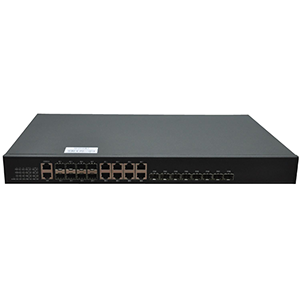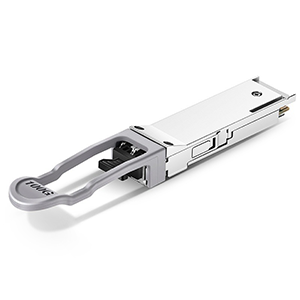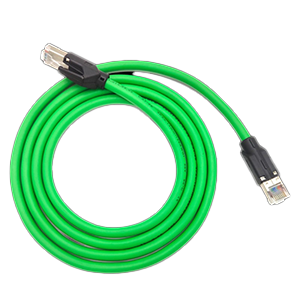Thank you very much for reading this article, I will introduce you to OS2 fiber and OM3 fiber. As two important types in optical fiber communications, they have different characteristics and applications. Understanding their differences and applicable scenarios will help you make wise choices and obtain efficient fiber optic communication solutions.
Overview of OS2 fiber and OM3 fiber
OS2 fiber (Single-mode Fiber):
- Definition: OS2 fiber is a single-mode fiber used to transmit a single mode of optical signals. It has a smaller cable core diameter (usually 9 microns) and a larger refractive index difference, allowing optical signals to travel in a more direct path.
- Features: OS2 optical fiber is suitable for long-distance transmission, with lower transmission loss and higher bandwidth. It can support high-speed data transmission and has good fiber tensile strength and durability. OS2 optical fiber is usually used in application scenarios such as long-distance transmission in optical fiber communications, metropolitan area networks, wide area networks, and fiber-to-the-home (FTTH).
OM3 fiber (Multimode Fiber):
- Definition: OM3 optical fiber is a multi-mode optical fiber used to transmit multiple modes of optical signals. It has a larger cable core diameter (usually 50 or 62.5 microns) and a smaller refractive index difference, allowing optical signals to propagate in multiple paths.
- Features: OM3 optical fiber is suitable for medium and short distance transmission, with lower manufacturing cost and higher bandwidth. It is commonly used in applications such as local area networks (LAN), data center interconnects, storage area networks (SAN), and Fiber Channel. OM3 optical fiber supports high-speed data transmission, such as Gigabit Ethernet (GbE) and Fiber Channel Protocol (FCP).
Transmission distance and bandwidth of OS2 optical fiber and OM3 optical fiber
OS2 fiber and OM3 fiber have different capabilities and characteristics in terms of transmission distance and bandwidth. Below is a discussion of their interpretation and applicability:
Transmission distance capability:
- OS2 fiber: Due to its smaller cable core diameter and higher refractive index difference, OS2 fiber is suitable for long-distance transmission. It can support transmission distances of tens of kilometers or even hundreds of kilometers, and has excellent signal fidelity and transmission efficiency. This makes OS2 optical fiber widely used in telecommunications and long-distance network connections.
- OM3 optical fiber: Due to its larger cable core diameter and smaller refractive index difference, OM3 optical fiber is suitable for medium and short distance transmission. Normally, the transmission distance of OM3 optical fiber is limited to a few hundred meters to one thousand meters. This makes it ideal for short-range communication environments such as data centers, local area networks, and storage area networks.
Bandwidth characteristics:
- OS2 fiber: OS2 fiber has lower transmission loss and higher bandwidth capabilities. It can support high-speed data transmission, such as 10 Gbps, 40 Gbps and 100 Gbps. Due to its single-mode transmission characteristics, OS2 optical fiber has high signal quality and transmission stability, and is suitable for long-distance, high-capacity optical fiber communication needs.
- OM3 optical fiber: OM3 optical fiber has a larger cable core diameter and higher bandwidth capability. It is capable of supporting higher transmission rates such as 10 Gbps and 40 Gbps. However, as data rates continue to increase, the transmission distance of OM3 fiber will be limited because multi-mode transmission will cause an increase in multi-mode dispersion and attenuation.
Applicability and Limitations:
- OS2 optical fiber applicability and limitations: OS2 optical fiber is suitable for long-distance transmission and high-rate data transmission, and is especially suitable for optical fiber communications and long-distance network connections across a large range. However, due to its smaller cable core diameter, OS2 fiber is more complex to install and connect, requiring precise alignment and commissioning.
- OM3 optical fiber applicability and limitations: OM3 optical fiber is suitable for short-distance transmission and high-density data transmission, and is commonly used in scenarios such as data center interconnection, local area networks, and storage area networks. However, as the transmission distance increases, the transmission performance of OM3 optical fiber will decrease, and you need to pay attention to the limitation of transmission distance. In addition, OM3 fiber is relatively low cost and easy to install and maintain.
Compatibility of OS2 fiber and OM3 fiber
OS2 fiber and OM3 fiber have certain differences in compatibility and interoperability. The following is a discussion of their compatibility with different fiber optic interfaces and equipment:
Fiber optic interface:
- OS2 optical fiber: OS2 optical fiber usually adopts SC (standard connection) or LC (small connection) interface. These interface types are widely used in single-mode fiber optic applications, so OS2 fiber is compatible with most single-mode fiber optic interfaces.
- OM3 optical fiber: OM3 optical fiber usually uses LC interface, which is a common interface type in multi-mode optical fiber. LC interfaces are also widely used in high-density fiber optic equipment and modules.
Device compatibility:
- OS2 optical fiber: OS2 optical fiber is compatible with equipment that supports single-mode optical fiber, such as single-mode optical fiber transceivers, single-mode optical fiber switches and routers, etc. It can interconnect with these devices and enable long-distance single-mode fiber transmission.
- OM3 optical fiber: OM3 optical fiber is compatible with equipment that supports multi-mode optical fiber, such as multi-mode optical fiber transceivers, multi-mode optical fiber switches and storage devices. It can be connected with these devices to achieve short to medium distance multi-mode fiber transmission.
It should be noted that OS2 fiber and OM3 fiber are not directly compatible due to differences in fiber parameters and transmission characteristics. In practical applications, if you need to connect OS2 optical fiber and OM3 optical fiber, you usually need to use the corresponding optical fiber adapter or conversion module to achieve the connection. These adapters or modules can realize signal conversion and adaptation between single-mode optical fiber and multi-mode optical fiber, thereby ensuring interoperability and interoperability between optical fibers.
Comparison of application scenarios between OS2 optical fiber and OM3 optical fiber
OS2 optical fiber and OM3 optical fiber have different advantages and applicability differences in different application scenarios. The following is a comparison of their actual application cases in the fields of long-distance communications, data centers, and enterprise networks:
Long distance communication:
- OS2 optical fiber: OS2 optical fiber is suitable for long-distance communications due to its single-mode transmission and smaller cable core diameter. It is widely used in fields such as optical fiber backbone networks, metropolitan area networks, and remote communications. Practical application examples include cross-country and intercontinental fiber optic connections, long-distance fiber optic transmission networks, and submarine fiber optic cables.
- OM3 optical fiber: OM3 optical fiber is suitable for short- and medium-distance communications, so its application in long-distance communications is relatively limited.
Data center:
- OS2 fiber optics: OS2 fiber optics are commonly used in data center applications to connect fiber optic links across floors or buildings. It can achieve reliable high-speed data transmission and is suitable for long-distance interconnections between data centers.
- OM3 fiber: OM3 fiber is a common choice in data centers, especially for short-distance interconnects and high-density connections. It is suitable for server interconnection, network device connection, and communication between storage devices within the data center.
Enterprise network:
- OS2 optical fiber: OS2 optical fiber is commonly used in corporate networks to connect office buildings or branches in different locations. It enables reliable long-distance communications and supports remote offices and distributed network architectures.
- OM3 optical fiber: OM3 optical fiber is commonly used in enterprise networks for LAN and storage area networks. It is suitable for connecting servers, switches and storage devices within the enterprise, supporting high-speed data transmission and high-density connection requirements.
Cost comparison between OS2 optical fiber and OM3 optical fiber
There are some differences in cost between OS2 fiber and OM3 fiber, which mainly involve factors such as the price of the fiber itself and installation and maintenance costs. Here’s a look at their cost comparisons:
The price of the optical fiber itself:
- OS2 fiber: Since OS2 fiber uses single-mode transmission technology, its manufacturing and processing processes are relatively complex, so the price of the fiber itself is usually higher.
- OM3 fiber: OM3 fiber adopts multi-mode transmission technology, and the manufacturing and processing process is relatively simple, so the price of the fiber itself is usually lower.
Installation and maintenance costs:
- OS2 optical fiber: Since OS2 optical fiber is mainly used for long-distance communication and large-scale network deployment, its installation and maintenance process may require more professional technology and equipment, thus increasing costs.
- OM3 optical fiber: OM3 optical fiber is usually used in applications such as short- and medium-distance communications and data centers. Its installation and maintenance are relatively simple, so the cost is low.
In practical applications, in addition to the cost of the optical fiber itself, other factors also need to be considered comprehensively, such as network equipment, optical fiber interfaces, installation and maintenance costs, etc. In addition, other fiber types (such as OS1, OM4, etc.) can also be considered as alternatives depending on the needs and budget of the specific application.
Conclusion:
OS2 optical fiber and OM3 optical fiber play an important role in the field of optical fiber communication. OS2 optical fiber is suitable for long-distance communication needs, with excellent transmission distance and low loss. OM3 optical fiber performs well in short-distance communications, providing high bandwidth and high-speed transmission.
If you are interested in OS2 fiber or OM3 fiber, please contact us. We will provide you with professional advice and support to help you choose the fiber optic solution that suits your needs and achieve superior communication performance and reliability.
Os2 fiber and Om3 fiber FAQs
OS optical fiber and OM optical fiber are the two main types of optical fiber used for optical fiber communication. Their differences are mainly reflected in the thickness of the optical fiber core and the propagation mode of optical signals in the optical fiber:
OS (Optical Single Mode): With a thinner core (usually 9 microns), light travels in a single mode, suitable for long-distance transmission (e.g. OS2 up to several kilometers), but is relatively expensive.
OM (Optical Multimode): With a thicker core (usually 50 or 62.5 microns), light can propagate in multiple modes, suitable for short-distance transmission (for example, OM3 can reach about 300 meters), and is relatively cheap.
OS2 is a common type of single-mode fiber (Single-mode).
The theoretical transmission rate of OS2 fiber depends on the light source and transceiver used, but it can typically support high-rate data transmission up to 100Gbps. Please refer to the manufacturer’s specifications for specific rates.
OM3 is a common type of multimode fiber (Multimode).
In fiber optics, OS2 stands for Optical Single-Mode 2. It is a specification that defines the characteristics and performance of single-mode fiber optic cables. OS2 fiber is designed for long-distance communication and supports higher bandwidths compared to multimode fiber. It has a smaller core size, allowing for the transmission of a single light signal, which reduces signal attenuation and enables longer reach distances.
OM3 (Optical Multimode 3) is a type of multimode fiber optic cable. It is designed to support higher bandwidth and faster transmission speeds compared to older multimode fibers like OM1 and OM2. OM3 fiber is commonly used for 10 Gigabit Ethernet applications over short distances, typically up to 300 meters. It features a larger core size that allows multiple light signals to propagate simultaneously, enabling high-speed data transmission within local area networks (LANs) and data centers.
OS1 and OS2 are both single-mode fiber, but OS2 is a performance-improved type:
OS1: One of the earliest single-mode fiber standards, suitable for rates from 10Mbps to 2.5Gbps, now less used.
OS2: Has lower light attenuation characteristics and can support longer distance transmission and higher rates (such as 10Gbps and above).
Therefore, OS2 is a better choice than OS1 in most cases.
OM3 fiber can typically support speeds up to 10 Gigabit Ethernet (10GbE).
The maximum transmission distance of OS2 fiber depends on the wavelength used and signal strength, but can generally reach more than several kilometers.
For example, at the 1310nm wavelength, the transmission distance of OS2 can reach more than 10 kilometers; while at the 1550nm wavelength, the transmission distance can be further.
Note: The distance used in actual applications will be smaller than the theoretical maximum value. For details, please refer to the manufacturer’s specifications and attenuation coefficient and other parameters.




